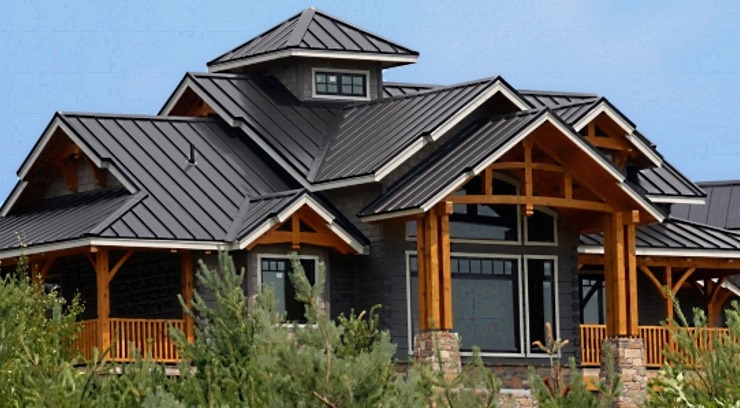Features
Metal Roof Installation Guide
A step-by-step guide to installing a metal roof on your home.

Widely praised by homeowners for its aesthetic appeal and durability, metal roofing is a relatively new installation option.
Its robust nature makes metal roofs sustain rough weather conditions, enhancing both the resilience and visual appeal of a home.
Though metal roofs boast a very simple design, successful installation of this roof demands a combination of skill and careful planning to ensure safety and longevity.
Metal roofing installation steps
Here is a step-by-step guide to installing a metal roof on your home.
1. Measure your roof.
2. Remove or install a metal roof over an existing roof.
3. Fix any roof damage.
4. Place a moisture barrier.
5. Install drip edges and closure strips.
6. Install metal roofing panels.
7. Add ridge cap.
Instructions
1. Measure your roof
First, measure your roof to have an idea of how much roofing material will be needed.
Measure the length, width, and rise of a section; the rise is the line from the low to high point on the roof.
Knowing the rising number, one can compute the roof slope; that is, slope equals rise divided by run.
The slope factor is found by squaring the rise, adding it to the square of the run, taking the square root, and finally dividing it by the run.
Multiply the slope factor by the area measurement to provide the total square footage that needs to be covered.
Do this for each section of roofing adding 10% to the length to allow for waste.
2. Remove or install a metal roof over an existing roof
Many building codes have a limit on the number of roofing layers that are allowed, typically two. If you’re placing a metal roof over an existing one, be sure to check what’s allowed.
Always consult a building inspector and verify with your local government, because some building codes do vary from region to region.
To replace your roof, you first need to tear off your existing roof. Plan smartly because you will need one or two days of fair weather to complete the task.
3. Repairing a damaged roof
Once the roof is removed, inspect the condition of your frame, sheathing, insulation, and ventilation. Address any discovered roof damage to reinforce a healthy and strong structure.
RELATED: 11 Types of Roofing Materials
4. Apply the underlayment
Before installing your metal roofing, you will have to install an underlayment or insulation layer. Roofing felt paper will do the trick—just fasten it down with staples or nails.
5. Install drip edges and closure strips
The drip edges are laid along the eaves and rake of the roofing, then nailed with 1-¼-inch galvanized roofing nails, about 16 inches apart.
Overlayment for several runs should be 1/4 to 1/2 inch; however, keep the nails away from the lapped joints. Be sure to note the gutters overhanging the drip flashing by 1/2 an inch.
Apply sealant tape, then peel back the closure strip’s backer paper, laying it on top without stretching it out.
6. Install metal roofing panels
When starting to install metal roofing, remember to overlap edging by 1/2 to 3/4 inch, making sure that it is square to the roof line.
Install screws as recommended by the manufacturer, taking special care in areas that are prone to hurricanes, as local codes may be more stringent in such areas.
RELATED: How to Choose the Best Roofing for Your Home
Work from the eaves up, securing screws but not overtightening.
Apply silicone sealant under the short edge of each subsequent panel to create a watertight seal. Continue adding and cutting panels as necessary with tin snips or a circular saw.
7. Add ridge cap
Following the laying of the panels lay down the ridge caps. Choose between the vented and solid closure strips based on ventilation requirements.
Mark the ridge cap placement with a chalk line, apply sealant tape and ensure that closure strips are tightly fitted. Apply another strip of sealant tape on top.
Using the manufacturer’s instructions, install the ridge cap, using screws and overlapping the pieces about 6 inches.
Tips & Warning
a.) Furnish a metal roofing system with hidden gutter channels. This will give your house better drainage while it makes it even more attractive.
b.) Consider your safety first. Wear protective rubber-coated gloves to do the metal roofing and flashings.
c) After completing the metal roofing installation, remove all shavings or filings to prevent rust spots from forming.














